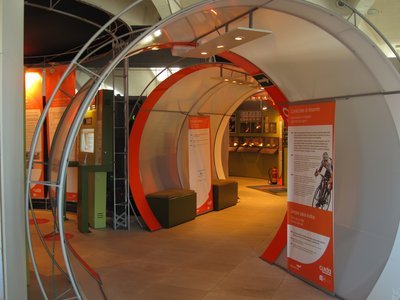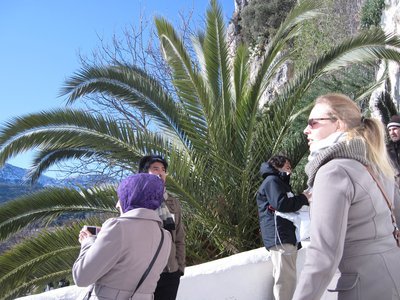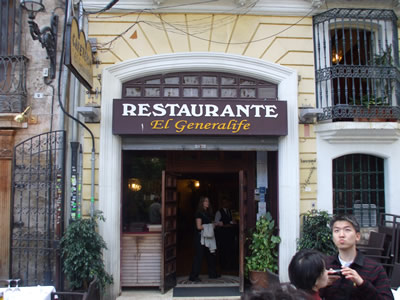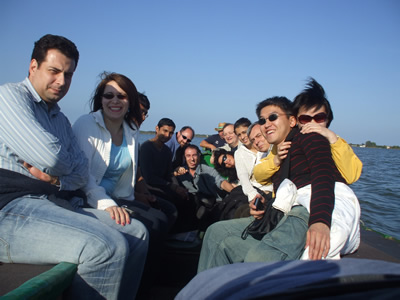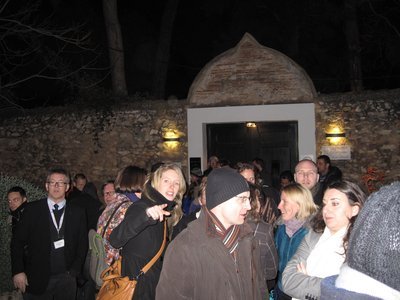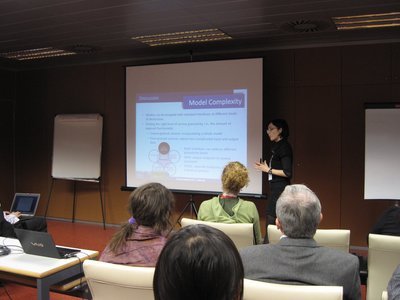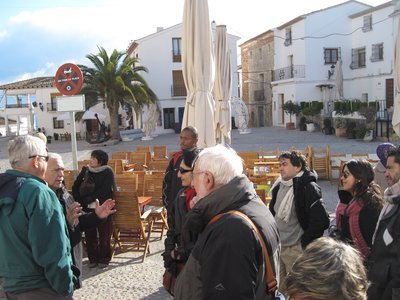ICAS 2021 - The Seventeenth International Conference on Autonomic and Autonomous Systems
May 30, 2021 - June 03, 2021
ICAS 2021: Call for Papers
Onsite and Online Options: In order to accommodate a large number of situations, we are offering the option for either physical presence or virtual participation (pdf slides or pre-recorded videos).
The ICAS 2021 (International Conference on Autonomic and Autonomous Systems) is a multi-track event covering related topics on theory and practice on systems automation, autonomous systems and autonomic computing.
The main tracks refer to the general concepts of systems automation, and methodologies and techniques for designing, implementing and deploying autonomous systems. Next tracks develop around design and deployment of context-aware networks, services and applications, and the design and management of self-behavioral networks and services. It is also considering monitoring, control, and management of autonomous self-aware and context-aware systems and topics dedicated to specific autonomous entities, namely, satellite systems, nomadic code systems, mobile networks, and robots. It has been recognized that modeling (in all forms this activity is known) is the fundamental for autonomous subsystems, as both managed and management entities must communicate and understand each other. Small-scale and large-scale virtualization and model-driven architecture, as well as management challenges in such architectures are considered. Autonomic features and autonomy requires a fundamental theory behind and solid control mechanisms. These topics give credit to specific advanced practical and theoretical aspects that allow subsystem to expose complex behavior. It is aimed to expose specific advancements on theory and tool in supporting advanced autonomous systems. Domain case studies (policy, mobility, survivability, privacy, etc.) and specific technology (wireless, wireline, optical, e-commerce, banking, etc.) case studies are targeted. A special track on mobile environments is indented to cover examples and aspects from mobile systems, networks, codes, and robotics.
Pervasive services and mobile computing are emerging as the next computing paradigm in which infrastructure and services are seamlessly available anywhere, anytime, and in any format. This move to a mobile and pervasive environment raises new opportunities and demands on the underlying systems. In particular, they need to be adaptive, self-adaptive, and context-aware.
Adaptive and self-management context-aware systems are difficult to create, they must be able to understand context information and dynamically change their behavior at runtime according to the context. Context information can include the user location, his preferences, his activities, the environmental conditions and the availability of computing and communication resources. Dynamic reconfiguration of the context-aware systems can generate inconsistencies as well as integrity problems, and combinatorial explosion of possible variants of these systems with a high degree of variability can introduce great complexity.
Traditionally, user interface design is a knowledge-intensive task complying with specific domains, yet being user friendly. Besides operational requirements, design recommendations refer to standards of the application domain or corporate guidelines.
Commonly there is a set of general user interface guidelines; the challenge is due to a need for cross-team expertise. Required knowledge differs from one application domain to another, and the core knowledge is subject to constant changes and to individual perception and skills.
Passive approaches allow designers to initiate the search for information in a knowledge-database to make accessible the design information for designers during the design process. Active approaches, e.g., constraints and critics, have been also developed and tested. These mechanisms deliver information (critics) or restrict the design space (constraints) actively, according to the rules and guidelines. Active and passive approaches are usually combined to capture a useful user interface design.
All these points pose considerable technical challenges and make self-adaptable context-aware systems costly to implement. These technical challenges lead the context-aware system developers to use improved and new concepts for specifying and modeling these systems to ensure quality and to reduce the development effort and costs.
We solicit both academic, research, and industrial contributions. We welcome technical papers presenting research and practical results, position papers addressing the pros and cons of specific proposals, such as those being discussed in the standard fora or in industry consortia, survey papers addressing the key problems and solutions on any of the above topics short papers on work in progress, and panel proposals.
Industrial presentations are not subject to the format and content constraints of regular submissions. We expect short and long presentations that express industrial position and status.
Tutorials on specific related topics and panels on challenging areas are encouraged.
The topics suggested by the conference can be discussed in term of concepts, state of the art, research, standards, implementations, running experiments, applications, and industrial case studies. Authors are invited to submit complete unpublished papers, which are not under review in any other conference or journal in the following, but not limited to, topic areas.
All topics and submission formats are open to both research and industry contributions.
ICAS 2021 conference tracks:
SELFTRENDS: Toward brain-like autonomic and autonomous systems
Adaptive robust resource allocation; Optimal self-organized collective actions; Collective adaptation; Active learning; Opportunistic collaborative interactive learning; Adaption fairness; Social and biometric data-aware adaptation; Brain connectivity models; Using unbalanced Datasets; Quantum-inspired optimization; Automated (industrial) assembly environments; Deep neural networks; Multimodal knowledge of the brain; Self-organization in M2M infrastructures; Self-organizing socio-technical systems; Context-aware data self-adaptation; Multi-level loop encapsulation in smart systems; Uncertainty in self-adaptive systems; Adaptive Software defined systems (SDS) scalability; Adaptability in multi-tenant Clouds; Self-aware model-driven systems; Proactive self-adaptation; Self-adaptive urban traffic; Adaptive power profiling; Run-time for self-adaptive systems; Distributed adaptive systems; Self-improving system integration; Self-improving activity recognition systems; Feedback computing; Optimal feedback control; Dynamic adaptive applications; Self-managing Clouds; Decentralized autonomic behavior; Market-adaptive trust; Semantics of self-behavior; Self-organizing patterns; Stability propagation in self-organizing systems; Inconsistency in self-deciding systems; Reasoning problems tractability; Decidability in self-organizing systems
ROBOTRENDS: Robot-related trends
Autonomous aquatic agents; Aerial autonomous robots; Drones control and management; Knowledge-based robot motions; Autonomous mobile robot interaction; Humanoid robots; Intelligent robots; Self-reconfigurable mobile robots; Humanoid imitative learning; Robots in unknown environments; Human centric robots; Adjustable robust optimizations; Moral autonomous agents and human evolution; Cognitive robotics; Robot partnership; Affective communication robots; Human-centric robotics; Visually-impaired and robots; Evolutionary swarm robotics; Robots and human advices; Universal robot hands
SOCIAL ROBOTS: Social robots and cognition
Human-robot interaction; Robot-robot interaction; Perception of a humanoid robots; Humanoid robots mediating social Interaction; Socially assistive robots; Conversational robots; Verbal Interaction; Human-robot touch interaction; Expressive interactions; Social emotions; Arts by humanoid robots; Collaborative social robots; Game approaches; Human-robot interactive games; Robots co-worker partners; Healthcare companion robots; Socially assistive robots; Robot-assisted rehabilitation therapy; Child-robot interaction; Mobile assistive robots; Robots in public spaces; Shopping mall robots; Home utility robots; Robot-assisted cognitive training; Robot-based multimodal emotion recognition; Advertizign robots; Telepresence robots; Robot teleoperation; Robots' social credibility
MACHINE LEARNING: Advanced topics in Deep/Machine learning
Distributed and parallel learning algorithms; Image and video coding; Deep learning and Internet of Things; Deep learning and Big data; Data preparation, feature selection, and feature extraction; Error resilient transmission of multimedia data; 3D video coding and analysis; Depth map applications; Machine learning programming models and abstractions; Programming languages for machine learning; Visualization of data, models, and predictions; Hardware-efficient machine learning methods; Model training, inference, and serving; Trust and security for machine learning applications; Testing, debugging, and monitoring of machine learning applications; Autonomous and robotics systems; Machine learning for systems.
SYSAT: Advances in system automation
Methods, techniques ant tools for automation features; Methodologies for automating of design systems;
Industrial automation for production chains;
Nonlinear optimization and automation control;
Nonlinearities and system stabilization;
Automation in safety systems;
Structured uncertainty;
Open and closed automation loops;
Test systems automation;
Theory on systems robustness;
Fault-tolerant systems
UNMANNED: Driver-less cars and unmanned vehicles
Self-driving cars; Drones; Terrestrial unmanned vehicles; Unmanned aerial vehicles; Underwater unmanned vehicles; Unmanned sea surface vehicles; Collision control; Traffic surveillance challenges; Path planning and estimation; Communication between unmanned vehicles; Integration of unmanned aerial vehicles in civil airspace; Unmanned vehicular clusters; Designing unmanned vehicular-based systems; Safety of unmanned vehicles; Commercial and surveillance applications; Emergency applications; Legal aspects of unmanned vehicular systems; Testbeds and pilot experiments
AUTSY: Theory and Practice of Autonomous Systems
Design, implementation and deployment of autonomous systems;
Frameworks and architectures for component and system autonomy;
Design methodologies for autonomous systems;
Composing autonomous systems;
Formalisms and languages for autonomous systems;
Logics and paradigms for autonomous systems;
Ambient and real-time paradigms for autonomous systems;
Delegation and trust in autonomous systems;
Centralized and distributed autonomous systems;
Collocation and interaction between autonomous and non-autonomous systems;
Dependability in autonomous systems;
Survivability and recovery in autonomous systems;
Monitoring and control in autonomous systems;
Performance and security in autonomous systems;
Management of autonomous systems;
Testing autonomous systems;
Maintainability of autonomous systems
AWARE: Design and Deployment of Context-awareness Networks, Services and Applications
Context-aware fundamental concepts, mechanisms, and applications;
Modeling context-aware systems;
Specification and implementation of awareness behavioral contexts;
Development and deployment of large-scale context-aware systems and subsystems;
User awareness requirements and design techniques for interfaces and systems;
Methodologies, metrics, tools, and experiments for specifying context-aware systems;
Tools evaluations, Experiment evaluations
AUTONOMIC: Autonomic Computing: Design and Management of Self-behavioral Networks and Services
Theory, architectures, frameworks and practice of self-adaptive management mechanisms;
Modeling and techniques for specifying self-ilities;
Self-stabilization and dynamic stability criteria and mechanisms;
Tools, languages and platforms for designing self-driven systems;
Autonomic computing and GRID networking;
Autonomic computing and proactive computing for autonomous systems;
Practices, criteria and methods to implement, test, and evaluate industrial autonomic systems;
Experiences with autonomic computing systems
CLOUD: Cloud computing and Virtualization
Hardware-as-a-service;
Software-as-a-service [SaaS applicaitions];
Platform-as-service;
On-demand computing models;
Cloud Computing programming and application development;
Scalability, discovery of services and data in Cloud computing infrastructures;
Privacy, security, ownership and reliability issues;
Performance and QoS;
Dynamic resource provisioning;
Power-efficiency and Cloud computing;
Load balancing;
Application streaming;
Cloud SLAs, business models and pricing policies;
Custom platforms;
Large-scale compute infrastructures;
Managing applications in the clouds; Data centers;
Process in the clouds;
Content and service distribution in Cloud computing infrastructures;
Multiple applications can run on one computer (virtualization a la VMWare);
Grid computing (multiple computers can be used to run one application);
Virtualization platforms;
Open virtualization format;
Cloud-computing vendor governance and regulatory compliance
MCMAC: Monitoring, Control, and Management of Autonomous Self-aware and Context-aware Systems
Agent-based autonomous systems;
Policy-driven self-awareness mechanisms and their applicability in autonomic systems;
Autonomy in GRID networking and utility computing;
Studies on autonomous industrial applications, services, and their developing environment;
Prototypes, experimental systems, tools for autonomous systems, GRID middleware
CASES: Automation in specialized mobile environments
Theory, frameworks, mechanisms and case studies for satellite systems;
Spatial/temporal constraints in satellites systems;
Trajectory corrections, speed, and path accuracy in satellite systems;
Mechanisms and case studies for nomadic code systems;
Platforms for mobile agents and active mobile code;
Performance in nomadic code systems;
Case studies systems for mobile robot systems;
Guidance in an a priori unknown environment;
Coaching/learning techniques;
Pose maintenance, and mapping;
Sensing for autonomous vehicles;
Planning for autonomous vehicles;
Mobile networks, Ad hoc networks and self-reconfigurable networks
ALCOC: Algorithms and theory for control and computation
Control theory and specific characteristics;
Types of computation theories;
Tools for computation and control;
Algorithms and data structures;
Special algorithmic techniques;
Algorithmic applications;
Domain case studies;
Technologies case studies for computation and control;
Application-aware networking
MODEL: Modeling, virtualization, any-on-demand, MDA, SOA
Modeling techniques, tools, methodologies, languages;
Model-driven architectures (MDA);
Service-oriented architectures (SOA);
Utility computing frameworks and fundamentals;
Enabled applications through virtualization;
Small-scale virtualization methodologies and techniques;
Resource containers, physical resource multiplexing, and segmentation;
Large-scale virtualization methodologies and techniques;
Management of virtualized systems;
Platforms, tools, environments, and case studies;
Making virtualization real;
On-demand utilities;
Adaptive enterprise;
Managing utility-based systems;
Development environments, tools, prototypes
SELF: Self-adaptability and self-management of context-aware systems
Novel approaches to modeling and representing context adaptability, self-adaptability, and self-manageability;
Models of computation for self-management context-aware systems;
Use of MDA/MDD (Model Driven Architecture / Model Driven Development) for context-aware systems;
Design methods for self-adaptable context-aware systems;
Applications of advanced modeling languages to context self-adaptability;
Methods for managing adding context to existing systems and context-conflict free systems;
Architectures and middleware models for self-adaptable context-aware systems;
Models of different adaptation and self-adaptation mechanisms (component-based adaptation approach, aspect oriented approach, etc.);
System stability in the presence of context inconsistency;
Learning and self-adaptability of context-aware systems;
Business considerations and organizational modeling of self-adaptable context-aware systems;
Performance evaluation of self-adaptable context-aware systems;
Scalability of self-adaptable context-aware systems
KUI: Knowledge-based user interface
Evolving intelligent user interface for WWW;
User interface design in autonomic systems;
Adaptive interfaces in a knowledge-based design;
Knowledge-based support for the user interface design process;
Built-in knowledge in adaptive user interfaces;
Requirements for interface knowledge representation;
Levels for knowledge-based user interface;
User interface knowledge on the dynamic behavior;
Support techniques for knowledge-based user interfaces;
Intelligent user interface for real-time systems;
Planning-based control of interface animation;
Model-based user interface design;
Knowledge-based user interface migration;
Automated user interface requirements discovery for scientific computing;
Knowledge-based user interface management systems;
3D User interface design;
Task-oriented knowledge user interfaces;
User-interfaces in a domestic environment;
Centralised control in the home;
User-interfaces for the elderly or disabled;
User-interfaces for the visually, aurally, or mobility impaired;
Interfacing with ambient intelligence systems;
Assisted living interfaces;
Interfaces for security/alarm systems
AMMO: Adaptive management and mobility
QoE and adaptation in mobile environments;
Content marking and management (i.e. MPEG21);
Adaptive coding (H.265, FEC schemes, etc.. );
Admission control resource allocation algorithms;
Monitoring and feedback systems;
Link adaptation mechanisms;
Cross layer approaches;
Adaptation protocols (with IMS and NGNs scenarios);
QoE vs NQoS mapping systems;
Congestion control mechanisms;
Fairness issues (fair sharing, bandwidth allocation...);
Optimization/management mechanisms (MOO, fuzzy logic, machine learning, etc.)
Deadlines:
Submission | Mar 23, 2021 |
Notification | Apr 15, 2021 |
Registration | Apr 26, 2021 |
Camera ready | May 01, 2021 |
Deadlines differ for special tracks. Please consult the conference home page for special tracks Call for Papers (if any).
INSTRUCTION FOR THE AUTHORS
Authors of selected papers will be invited to submit extended versions to one of the IARIA Journals.
Publisher: XPS (Xpert Publishing Services)
Archived: ThinkMindTM Digital Library (free access)
Prints available at Curran Associates, Inc.
How to submit to appropriate indexes.
Only .pdf or .doc files will be accepted for paper submission. All received submissions will be acknowledged via an automated system.
Contribution types
- regular papers [in the proceedings, digital library]
- short papers (work in progress) [in the proceedings, digital library]
- ideas: two pages [in the proceedings, digital library]
- extended abstracts: two pages [in the proceedings, digital library]
- posters: two pages [in the proceedings, digital library]
- posters: slide only [slide-deck posted on www.iaria.org]
- presentations: slide only [slide-deck posted on www.iaria.org]
- demos: two pages [posted on www.iaria.org]
FORMATS
Only .pdf or .doc files will be accepted for paper submission. All received submissions will be acknowledged via an automated system.
Final author manuscripts will be 8.5" x 11", not exceeding 6 pages; max 4 extra pages allowed at additional cost.
Helpful information for paper formatting for MS Word can be found here.
There is a community provided LaTeX template: the CTAN package iaria (with full IARIA formatting rules, including IARIA citation style, but for providing citation style it is tightly bound to pdflatex+biblatex+biber). In addition, there is also iaria-lite (not bound to pdflatex+biblatex+biber, but compatible with any TeX stack; thus, it cannot provide the IARIA citation formattings, but only the titlepage and content-related IARIA formatting rules). Based on the iaria package, there is a minimal working example as Overleaf template. When you are using the LaTeX templates, please still adhere to the additional editorial rules.
Slides-based contributions can use the corporate/university format and style.
Your paper should also comply with the additional editorial rules.
Once you receive the notification of contribution acceptance, you will be provided by the publisher an online author kit with all the steps an author needs to follow to submit the final version. The author kits URL will be included in the letter of acceptance.
We would recommend that you should not use too many extra pages, even if you can afford the extra fees. No more than 2 contributions per event are recommended, as each contribution must be separately registered and paid for. At least one author of each accepted paper must register to ensure that the paper will be included in the conference proceedings and in the digital library, or posted on the www.iaria.org (for slide-based contributions).
CONTRIBUTION TYPE
Regular Papers (up to 6-10 page article -6 pages covered the by regular registration; max 4 extra pages allowed at additional cost- ) (oral presentation)
These contributions could be academic or industrial research, survey, white, implementation-oriented, architecture-oriented, white papers, etc. They will be included in the proceedings, posted in the free-access ThinkMind digital library and sent for indexing. Please submit the contributions following the instructions for the regular submissions using the "Submit a Paper" button and selecting the appropriate contribution type. 12-14 presentation slides are suggested.
Short papers (work in progress) (up to 4 pages long) (oral presentation)
Work-in-progress contributions are welcome. These contributions represent partial achievements of longer-term projects. They could be academic or industrial research, survey, white, implementation-oriented, architecture-oriented, white papers, etc. Please submit the contributions following the instructions for the regular submissions using the "Submit a Paper" button and selecting the contribution type as work in progress. Contributors must follow the conference deadlines, describing early research and novel skeleton ideas in the areas of the conference topics. The work will be published in the conference proceedings, posted in the free-access ThinkMind digital library and sent for indexing. For more details, see the Work in Progress explanation page. 12-14 presentation slides are suggested.
Ideas contributions (2 pages long) (oral presentation)
This category is dedicated to new ideas in their very early stage. Idea contributions are expression of yet to be developed approaches, with pros/cons, not yet consolidated. Ideas contributions are intended for a debate and audience feedback. Please submit the contributions following the instructions for the regular submissions using the "Submit a Paper" button and selecting the contribution type as Idea. Contributors must follow the conference deadlines, describing early research and novel skeleton ideas in the areas of the conference topics. The work will be published in the conference proceedings, posted in the free-access ThinkMind digital library and sent for indexing. For more details, see the Ideas explanation page. 12-14 presentation slides are suggested.
Extended abstracts (2 pages long) (oral presentation)
Extended abstracts summarize a long potential publication with noticeable results. It is intended for sharing yet to be written, or further on intended for a journal publication. Please submit the contributions following the instructions for the regular submissions using the "Submit a Paper" button and selecting the contribution type as Extended abstract. Contributors must follow the conference deadlines, describing early research and novel skeleton ideas in the areas of the conference topics. The work will be published in the conference proceedings, posted in the free-access ThinkMind digital library and sent for indexing. 12-14 presentation slides are suggested.
Posters (paper-based, two pages long) (oral presentation)
Posters are intended for ongoing research projects, concrete realizations, or industrial applications/projects presentations. The poster may be presented during sessions reserved for posters, or mixed with presentation of articles of similar topic. A two-page paper summarizes a presentation intended to be a POSTER. This allows an author to summarize a series of results and expose them via a big number of figures, graphics and tables. Please submit the contributions following the instructions for the regular submissions using the "Submit a Paper" button and selecting the contribution type as Poster Two Pages. Contributors must follow the conference deadlines, describing early research and novel skeleton ideas in the areas of the conference topics. The work will be published in the conference proceedings, posted in the free-access ThinkMind digital library and sent for indexing. 8-10 presentation slides are suggested. Also a big Poster is suitable, used for live discussions with the attendees, in addition to the oral presentation.
Posters (slide-based, only) (oral presentation)
Posters are intended for ongoing research projects, concrete realizations, or industrial applications/projects presentations. The poster may be presented during sessions reserved for posters, or mixed with presentation of articles of similar topic. The slides must have comprehensive comments. This type of contribution only requires a 8-10 slide-deck. Please submit the contributions following the instructions for the regular submissions using the "Submit a Paper" button and selecting the contribution type as Poster (slide-only). The slide-deck will be posted, post-event, on www.iaria.org.
8-10 presentation slides are suggested. Also a big Poster is suitable, used for live discussions with the attendees, additionally to the oral presentation.
Presentations (slide-based, only) (oral presentation)
These contributions represent technical marketing/industrial/business/positioning presentations. This type of contribution only requires a 12-14 slide-deck. Please submit the contributions following the submission instructions by using the "Submit a Paper" button and selecting the contribution type as Presentation (slide-only). The slide-deck will be posted, post-event, on www.iaria.org.
12-14 presentation slides are suggested.
Demos (two pages) [posted on www.iaria.org]
Demos represent special contributions where a tool, an implementation of an application, or a freshly implemented system is presented in its alfa/beta version. It might also be intended for thsoe new application to gather the attendee opinion. A two-page summary for a demo is intended to be. It would be scheduled in special time spots, to ensure a maximum attendance from the participants. Please submit the contributions following the submission instructions by using the "Submit a Paper" button and selecting the contribution type as Demos. The Demos paper will be posted, post-event, on www.iaria.org.
Tutorial proposals
Tutorials provide overviews of current high interest topics. Proposals should be for 2-3 hour long. Proposals must contain the title, the summary of the content, and the biography of the presenter(s). The tutorial slide decks will be posted on the IARIA site.
Please send your proposals to tutorial proposal
Panel proposals
The organizers encourage scientists and industry leaders to organize dedicated panels dealing with controversial and challenging topics and paradigms. Panel moderators are asked to identify their guests and manage that their appropriate talk supports timely reach our deadlines. Moderators must specifically submit an official proposal, indicating their background, panelist names, their affiliation, the topic of the panel, as well as short biographies. The panel slide deck will be posted on the IARIA site.
Please send your proposals to panel proposal

